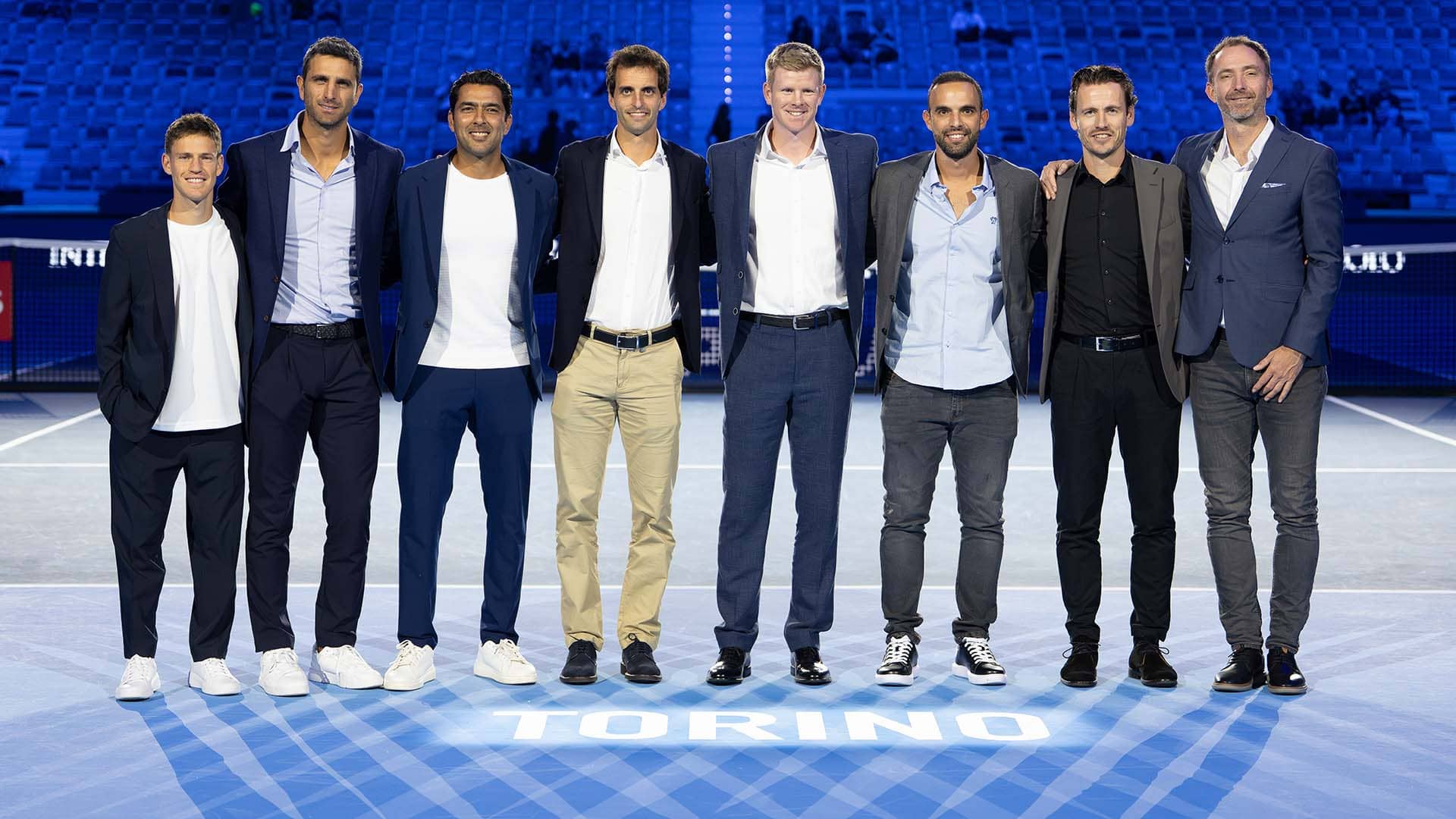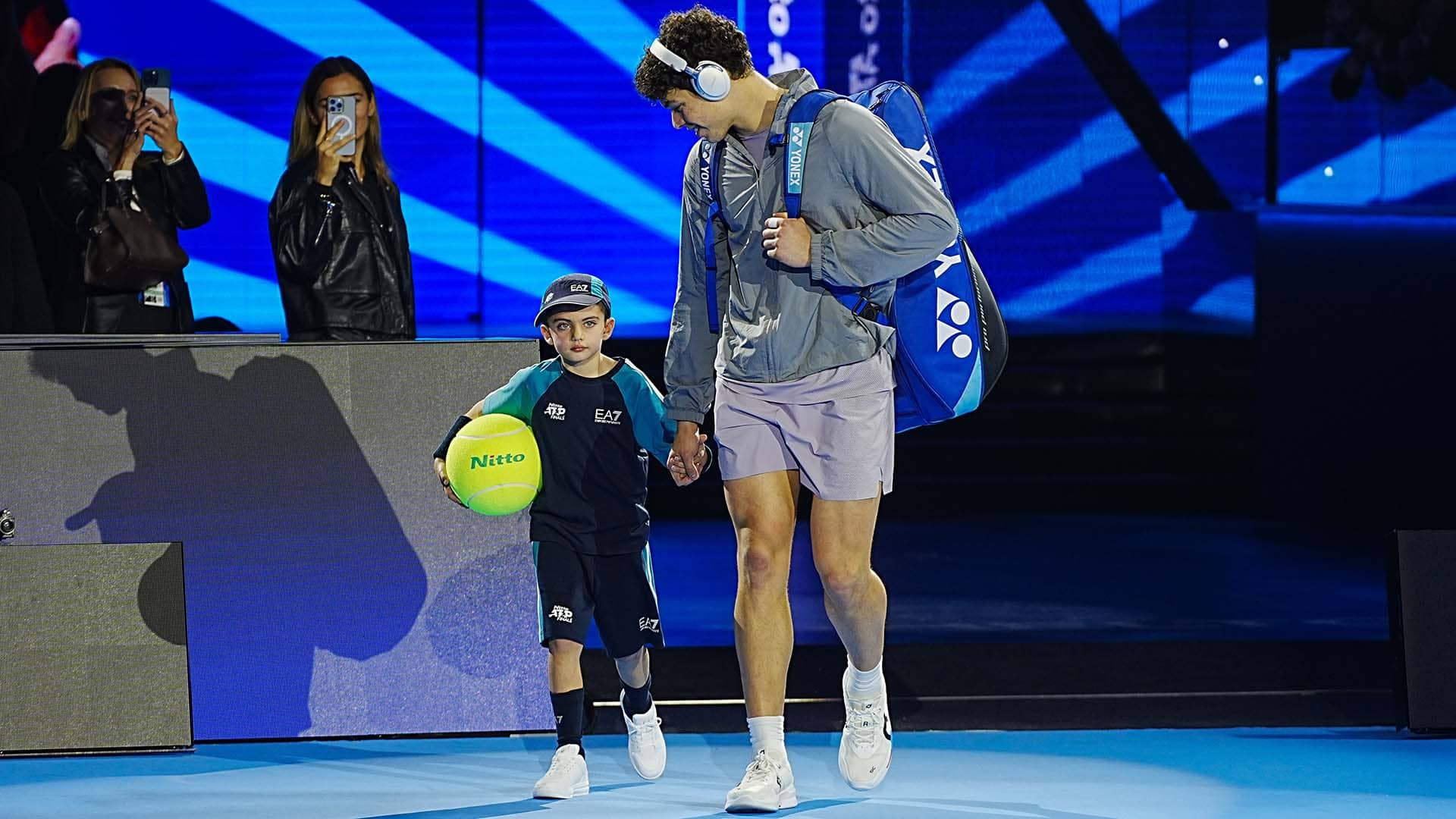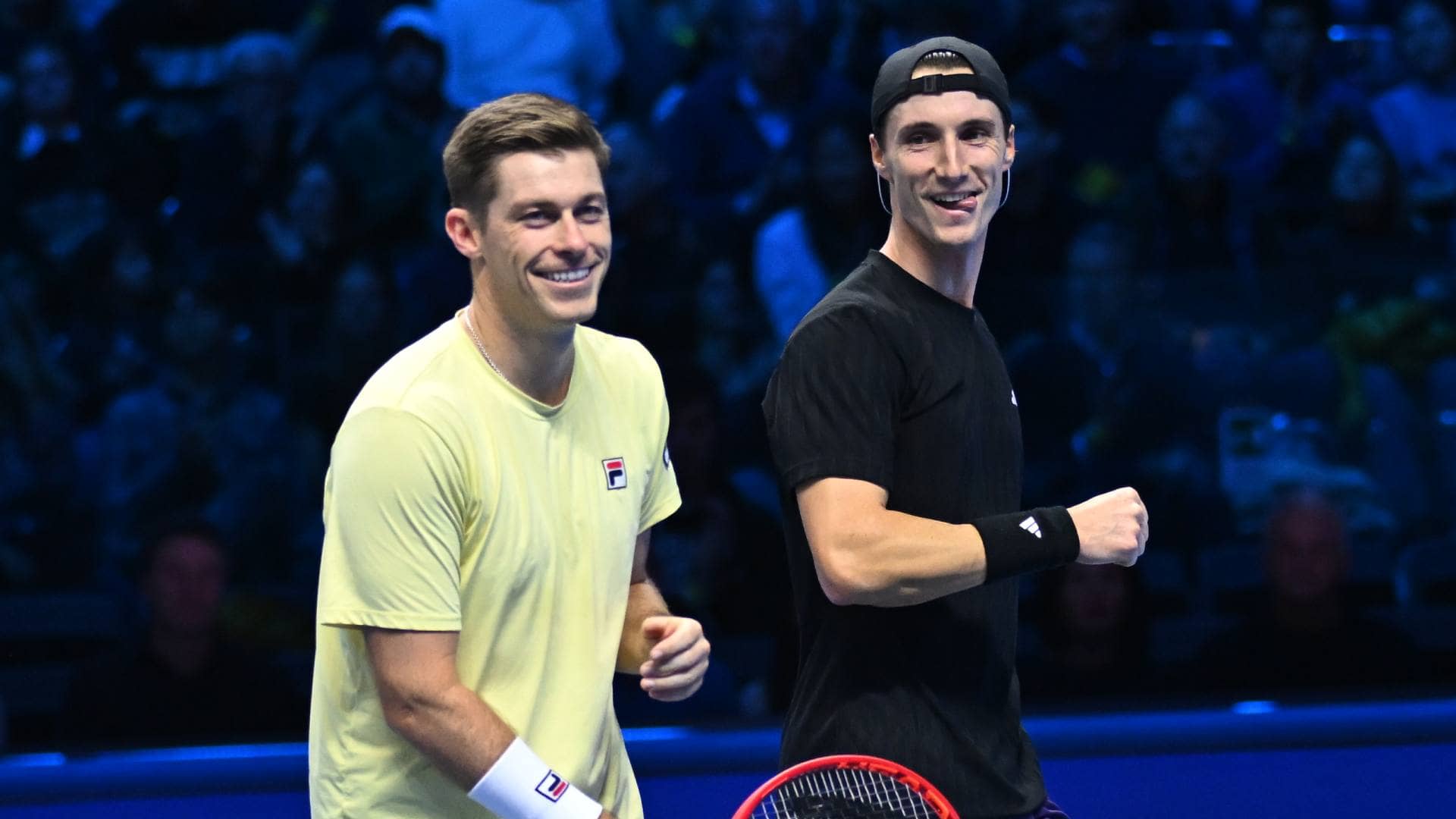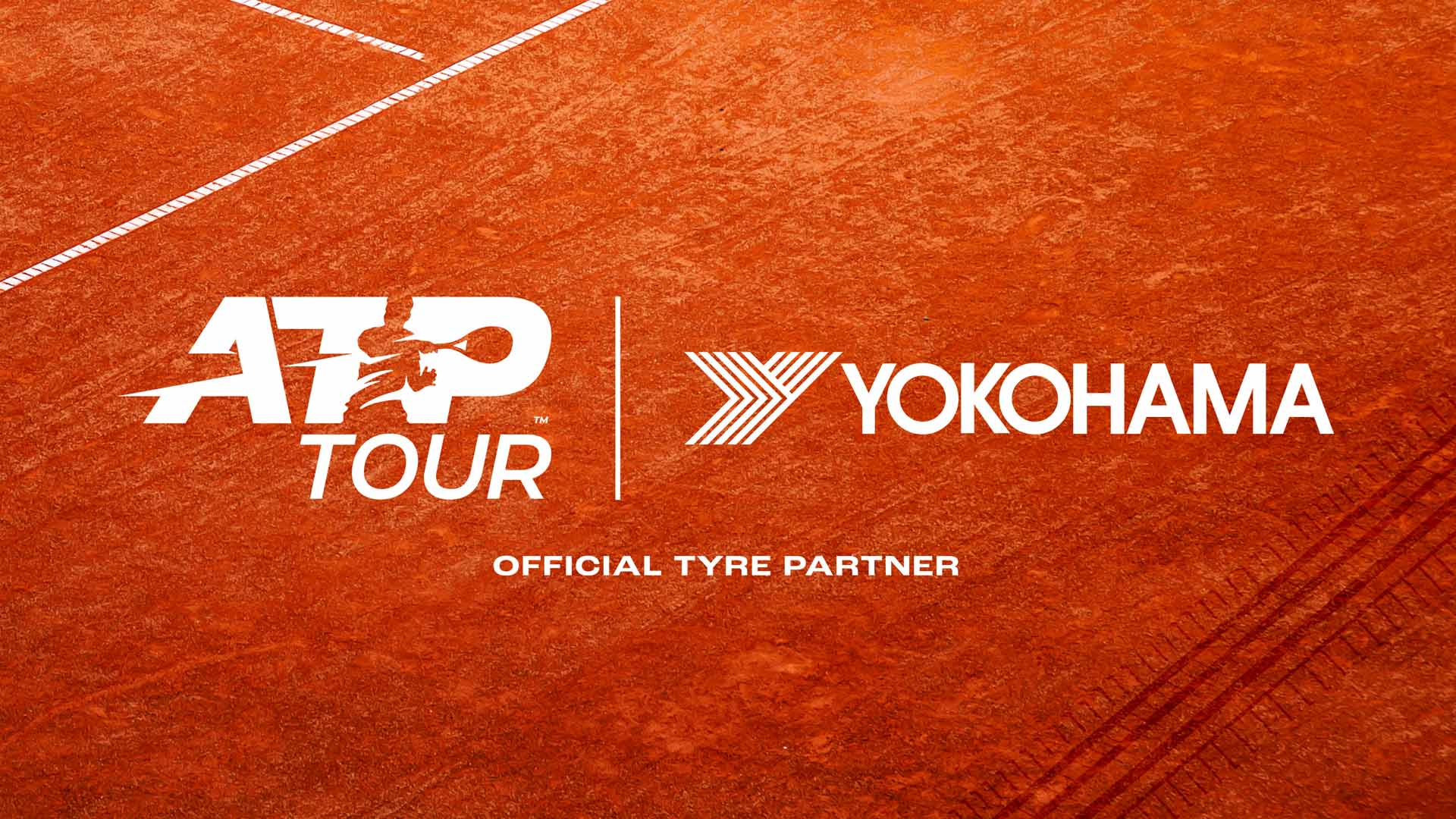Turin's Spotlight on Faded Rackets and Lasting Legacies
As the Nitto ATP Finals pulse with the season's final fury, eight retired warriors return to the Inalpi Arena, trading the grind of match points for the quiet glow of recognition, their stories a bridge between relentless pursuit and reflective peace.

In the electric hum of Turin's Inalpi Arena, where indoor hardcourts reward quick reflexes and precise angles, the Nitto ATP Finals opened its arms to eight recently retired ATP Tour stars on Friday. ATP Chairman Andrea Gaudenzi welcomed Juan Sebastian Cabal, Kyle Edmund, Robert Farah, Wesley Koolhof, Matwe Middelkoop, Aisam-Ul-Haq Qureshi, Albert Ramos-Vinolas, and Diego Schwartzman in the player lounge, his speech a nod to careers built on baseline tenacity and net-rushing synergy. This gathering transformed the season's pinnacle into a space of unhurried reflection, the arena's buzz a distant echo to the personal milestones now in focus. For these players, the event offered closure amid the ongoing clashes, a chance to savor the psychological shift from competitor to observer.
Family ties mend pandemic gaps
The former No. 8 in the PIF ATP Rankings ended his run on home clay in Buenos Aires that February, his compact game a masterclass in defensive counters and inside-out forehands that frustrated bigger hitters. Returning to an event he last played in 2020, Schwartzman embraced the lifted restrictions, turning the tournament into a family affair long denied by travel's isolation. His mother's presence, a tennis enthusiast sidelined during the pandemic's tight bubbles, added warmth to the recognition, reframing years of solitary grind into shared joy.
Standing alongside Fernando Sanchez, Senior Vice President of ATP Player Relations, and Gaudenzi, he highlighted the mental release of retirement. The lounge's casual vibe allowed conversations about past deep runs, where surface speed dictated everything from slice backhands to crosscourt rallies, now viewed without the weight of rankings pressure.
“It’s amazing to come back to a tournament, especially the ATP Finals and to be able to share it with someone from your family,” Schwartzman told ATPTour.com. “In my case, my mum is here. When I played the [Nitto ATP Finals], she couldn’t come because it was the pandemic and players’ invites were very limited. My mum’s a tennis fan, so we’ll enjoy a couple of days watching tennis and I’m getting a nice recognition. It’s fun and a good initiative.”
Injuries yield to reflective calm
The group later took the court for a ceremony right before the night session's singles battle between Alexander Zverev and Felix Auger-Aliassime, the arena's lights casting long shadows over their gathered forms. Edmund, whose powerful groundstrokes powered two ATP 250 titles and a semifinal surge at the 2018 Australian Open, saw injuries erode his path as the former World No. 14. At 30, retirement brought homebound clarity, the ceremony a bridge from those hardcourt battles—marked by flat inside-in winners—to quieter appreciation.
Flanked by parents Steven and Denise, who tracked his journey from juniors to pro circuits, he spoke of the tour's mental marathon, where each one–two combination carried future stakes. Ramos-Vinolas, a former World No. 17 with four titles, joined in the relief, his clay-grinding rallies now a memory as he relaxed with family under the arena's roof.
“I’ve realised that when you play, you don’t think too much about your career, but since retiring you have a lot more time at home, and you can appreciate your career a lot more,” the Briton reflected. “On Tour, but even on juniors and the journey, it’s nice to reflect. It’s good that the ATP reached out and said they wanted to celebrate my career with this ceremony… It’s a really nice touch and you remember these sorts of things. Since I retired, I haven’t been at an event, so it’s nice to come to the Finals. My parents are as well which is nice, because they were with me throughout my career.”
“The event is really amazing, I’m so happy to be here, to receive a small tribute and to come here with my family and spend a few more relaxed days at a tennis tournament,” the Spaniard added.
Doubles bonds echo in ceremony's glow
The singles trio shared the spotlight with doubles specialists, including three ex-No. 1s whose partnerships thrived on synchronized volleys and down-the-line poaches across grass and hard. Cabal and Farah, inseparable in their prime, found the event's exclusivity a perfect frame for revisiting those net approaches that turned points in majors. Koolhof, the 2020 Nitto ATP Finals champion with 21 titles, returned for his fourth straight year, now free from serve setups to reconnect with the tour's rhythm.
Middelkoop, who netted his first three crowns with him before wrapping up in Umag that July, insisted on his parents' attendance, closing the loop on a career of adaptive pairings. Qureshi, with 18 doubles titles including two Masters 1000s, ended in a Davis Cup tie in Paraguay that September; a former Top 10 and dual recipient of the ATP’s Arthur Ashe Humanitarian Award, his 25-year path wove cultural barriers with on-court resilience, from crosscourt lobs to family-rooted support.
The ceremony's intimacy, amid the crowd's building energy, amplified their shared psychological pivot—from mid-match tensions to legacy's steady light. As the current stars warmed up with sharp returns, these retirees hinted at futures shaped by the same courts but without the scoreboard's glare, their presence a reminder that tennis's true measure lies in the bonds it forges beyond the lines.
“It’s really amazing, of course, it was a very beautiful ceremony,” Cabal said. “We’ve experienced it as players, with other athletes, and we know that it’s a recognition for what you gave during your career. You look back and you see everything you achieved, and it’s really nice to remember it. And, of course, for them to do it for you at the best tournament of the year is really great.”
“Having the recognition here at the ATP Finals makes it even more special,” Farah noted. “This tournament is always one that we appreciate so much, it gives you that feeling of exclusivity and of quality. It’s really nice for them to do this here and it reminds you of many things you experienced at this tournament. Now we’re back here in a different situation, enjoying it and watching in a much more relaxed way. It’s really fun.”
“I think it’s a very nice initiative from the ATP and they do it well,” Koolhof added. “I had my goodbye. It’s nice to be back. It’s one of the most prestigious tournaments of the year, so it’s nice to be back here for the fourth year in a row, even though I’m not playing. It’s nice to see all the people again and celebrate what you’ve achieved.”
“I said I want to have my parents here, because they were there at the start and I wanted to give them opportunity to see me at the end of my tennis career,” Middelkoop shared. “It’s an amazing feeling. I’m very proud of what I accomplished, and to be in a group of legends here — which they are — it says a lot.”
“Obviously it’s an amazing feeling [to be here],” Qureshi conveyed. “Growing up as a Pakistani, a young kid, I never thought I would have such a long career to start with. Playing with the top guys, at the top tournaments, and qualifying for the Nitto ATP Finals also four times. It’s been amazing, and this is like a full circle. My parents are here, my wife, my son and daughter are here. It’s a lot of things to digest but I feel proud in the end as well for having an amazing career. The ATP was like a second family to me. I spent more time in these 25 years with people from the ATP and the staff, the players, the physios, the trainers and the line umpires, than my own family. I’ve had some ups, I’ve had some downs, but overall, I think it was a mutual friendship and trust that I gathered the most.”


